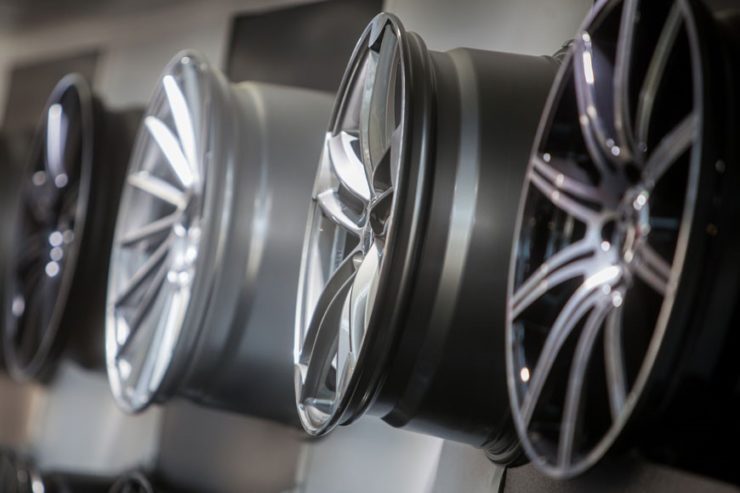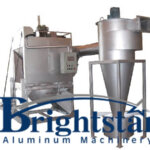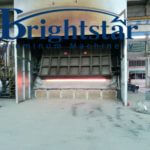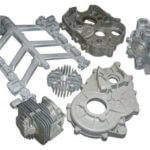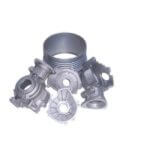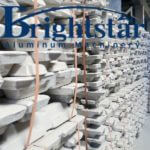Aluminium casting 3 main methods and its applications
Aluminium casting 3 main methods and its applications
Casting is a manufacturing process in which a liquid material is usually poured into a mold, which contains a hollow cavity of the desired shape, and then allowed to solidify.
The solidified part is also known as a casting, which is ejected or broken out of the mold to complete the process.
Casting materials are usually metals or various cold setting materials that cure after mixing two or more components together; examples are epoxy, concrete, plaster and clay.
Casting is most often used for making complex shapes that would be otherwise difficult or uneconomical to make by other methods.
Casting is a simple, inexpensive and versatile way of forming aluminum into a wide array of products.
Such items as power transmissions and car engines and the cap atop the Washington Monument were all produced through the aluminum casting process.
Most castings, especially large aluminum products, are usually made in sand molds.
Casting must include a part-removal design
Casting molds must be designed to accommodate each stage of the process.
For part removal, a slight taper (known as draft) must be used on surfaces perpendicular to the parting line so the pattern can be removed from the mold.
Casting parts with cavities
To produce cavities within castings (such as for engine blocks and cylinder heads used in cars), negative forms are used to make cores.
Casts of this nature are usually produced in sand molds.
Cores are inserted into the casting box after the pattern is removed.
Casting for light weight and strength
Aluminum’s properties of light weight and strength bring fundamental advantages when cast into parts.
One common application of die cast aluminum is thin-walled enclosures with ribs and bosses on the interior to maximize strength.
Casting in the early history of aluminum
The first commercial aluminum products were castings such as decorative parts and cookware.
Though produced through a centuries-old process, these products were considered new and unique.
The process and methods of casting aluminum
Casting is the original and most widely used method of forming aluminum into products.
Technical advances have been made, but the principle remains the same: Molten aluminum is poured into a mold to duplicate a desired pattern.
The three most important methods are die casting, permanent mold casting and sand casting.
Sand casting
Sand casting, also known as sand molded casting, is a metal casting process characterized by using sand as the mold material.
The term “sand casting” can also refer to an object produced via the sand casting process. Sand castings are produced in specialized factories called foundries.
Over 70% of all metal castings are produced via sand casting process
The most versatile method for producing aluminum products is sand casting. The process starts with a pattern that is a replica of the finished casting.
Virtually any pattern can be pressed into a fine sand mixture to form the mold into which the aluminum is poured.
The pattern is slightly larger than the part to be made, to allow for aluminum shrinkage during solidification and cooling.
As compared to die and permanent mold casting, sand casting is slow process but usually more economical for small quantities, intricate designs or when a very large casting is required.
Die casting
The die casting process forces molten aluminum into a steel die (mold) under pressure.
This manufacturing technique is normally used for high-volume production.
Precisely formed aluminum parts requiring a minimum of machining and finishing can be produced through this casting method.
The casting equipment and the metal dies represent large capital costs and this tends to limit the process to high-volume production.
Manufacture of parts using die casting is relatively simple, involving only four main steps, which keeps the incremental cost per item low.
It is especially suited for a large quantity of small- to medium-sized castings, which is why die casting produces more castings than any other casting process.
Die castings are characterized by a very good surface finish (by casting standards) and dimensional consistency.
Permanent mold casting
Permanent mold casting is a metal casting process that employs reusable molds (“permanent molds”), usually made from metal.
The most common process uses gravity to fill the mold, however gas pressure or a vacuum are also used.
A variation on the typical gravity casting process, called slush casting, produces hollow castings.
There are four main types of permanent mold casting: gravity, slush, low-pressure, and vacuum.
Permanent mold casting involves molds and cores of steel or other metal. Molten aluminum is usually poured into the mold, although a vacuum is sometimes applied. Permanent mold castings can be made stronger than either die or sand castings. Semi-permanent mold casting techniques are used when permanent cores would be impossible to remove from the finished part.
Typical products are components such as gears, splines, wheels, gear housings, pipe fittings, fuel injection housings, and automotive engine pistons.
Casting Aluminium Applications
The automotive industry is the largest market for aluminum casting. Cast products make up more than half of the aluminum used in cars. Cast aluminum transmission housings and pistons have been commonly used in cars and trucks since the early 1900s.
Parts of small appliances, hand tools, lawnmowers and other machinery are produced from thousands of different unique aluminum casting shapes.
The casting product most often used by consumers is cookware, the first aluminum product that was made available for everyday use.
1. Aluminum castings improve automotive fuel efficiency by contributing to weight-saving requirements
2. Aluminium is used in a broad range of networking and infrastructure equipment in the telecom and computing industries because RF filter boxes and housings require heat dissipation
3. In handheld devices, aluminum castings provide EMI/RFI shielding, rigidity, and durability with minimal weight
4. Because of aluminum’s excellent electrical performance and shielding properties, even in high-temperature environments, die cast aluminum is ideal for electronic connectors and housings
How to recover aluminium from the hot dross generated from melting, Aluminum dross machine can make it easier.
Brightstar Aluminum Machinery offers the total solution for it.
Contact us now to obtain a reliable no-obligation quote on your aluminium dross recovery machine!

